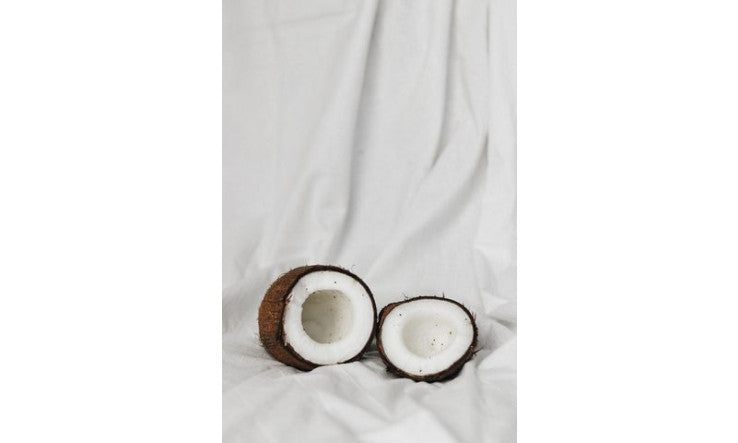What is the advantage of oil pulling?
Oil pulling is an old protocol for promoting oral health. “Oil-based mouthwashes were widely used to prevent cavities, bleeding gums, and bad breath as described in traditional Indian remedies.” 1 According to a study conducted in India among dental students, it was found to be effective in controlling plaque levels . 2
It is mentioned that oil pulling with coconut oil would be useful in maintaining good oral hygiene with teeth and gums "as it plays a vital role in preventing oral infections by pulling the infection (bacteria, toxins and pus) out of the tissues, allowing the body to heal itself. " 5 They hypothesized that certain medium-chain fatty acids have the ability to alter the bacterial cell wall, "thereby causing the bacteria to die." 4
This method can also be done using sesame oil. "This plant ( Sesamum indicum ) has been considered a gift from nature to humanity for its nutritional qualities and beneficial effects on health." 3, 7
In another study, the effectiveness of sesame oil oil pulling and chlorhexidine mouthwash on plaque-induced gingivitis in 20 adolescents was investigated. The study concluded that oil pulling resulted in a significant reduction in plaque . 3
Dr. Bruce Fife, nutritionist and naturopath, has published several books, including one on oil-pulling. He travels the world to educate health professionals and patients about the impressive effectiveness of the oil-pulling method. Often reverently nicknamed "Dr. Coconut," he is a passionate advocate of coconut oil. Among all the chapters, he explains the oral cavity, bacteria, fungal infections, dental caries, dental care, his method, and the secrets of his therapy to detoxify and heal the entire body through a healthy mouth. To learn about the promises of his oil-pulling method, this book will teach you about this so-called "revolutionary" treatment interpreted in the light of modern science. More than 161 references can be found at the end of the book.
How to do oil pulling?
Very easy! To begin, put a spoonful of coconut, MCT, or sesame oil in your mouth and swish it around. According to traditional Ayurvedic methods, this can last up to 20 minutes. After swishing the oil around in your mouth and between your teeth, spit the oil out into a trash can instead of the sink, as the oil can clog pipes when it hardens.
Fresh breath, MJ Mouth
A supplement for oil pulling! Here are the oils (5) chosen by Nathalie for this formula:
The Clove
Cloves have antiseptic and anti-inflammatory properties that are useful in cases of mouth ulcers.
Noble Laurel essential oil
It is the most widely used natural remedy for toothaches. 1,8-cineole, linalool, eugenol, alpha-pinene, and beta-pinene work together to fight bacterial infections.
Cardamom essential oil
Among its active compounds, eucalyptol has an anti-infectious action.
Lemon essential oil
It is known for its ability to whiten teeth. Indeed, it is composed mainly of limonene, a terpene with strong antibacterial and antiseptic properties, which will help eliminate tartar.
Peppermint essential oil
Known for its analgesic, anesthetic and disinfectant properties (it is antibacterial). It freshens breath.
Bad breath or halitosis is an oral condition caused by volatile sulfur compounds (VSCs) produced by bacteria present in dental and tongue biofilms. In one study 8 , 3 essential oils were investigated for their effects on the growth, biofilm formation, and killing and VSC production of Fusobacterium nucleatum , among them peppermint ( Mentha x piperita L. ). This study supports the potential, among others, of peppermint as a promising agent to control halitosis and promote oral health. It was found to permeabilize the bacterial cell membrane, suggesting that it represents the target of the EO tested. All three EOs studied were able to dose-dependently reduce VSC production by F. nucleatum.
Field Mint essential oil
Among its main properties: it is antibacterial, antiviral and decongestant. Just like its cousin peppermint, it provides a feeling of freshness.
Ginger essential oil
This oil is used in many different ways, very popular for aiding digestion, calming nausea, antibacterial; not to mention its components, gingerols which are among the most powerful antioxidants there are.
References:
1. Abhinav Singh and Bharathi Purohit. Tooth brushing, oil pulling and tissue regeneration: A review of holistic approaches to oral health, J Ayurveda Integr Med. 2011 Apr-Jun; 2(2): 64–68. doi: 10.4103/0975-9476.82525 PMID: 21760690
6. https://passeportsante.net/portail/huiles-essentielles
7. Asokan S. Oil pulling therapy. Indian J Dent Res 2008; 19: 169. https://www.ijdr.in/article.asp?issn=0970-9290;year=2008;volume=19;issue=2;spage=169;epage=169;aulast=
8. Ben Lagha Amel, Katy Vaillancourt, Patricia Maquera Huacho, Daniel Grenier. Effects of Labrador Tea Peppermint and Winter Savory Essential Oils on Fusobacterium nucleatum. https://www.researchgate.net/publication/345769666_Effects_of_Labrador_Tea_Peppermint_and_Winter_Savory_Essential_Oils_on_Fusobacterium_nucleatum
9. book-club-our-selection-of-very-interesting-books

































































